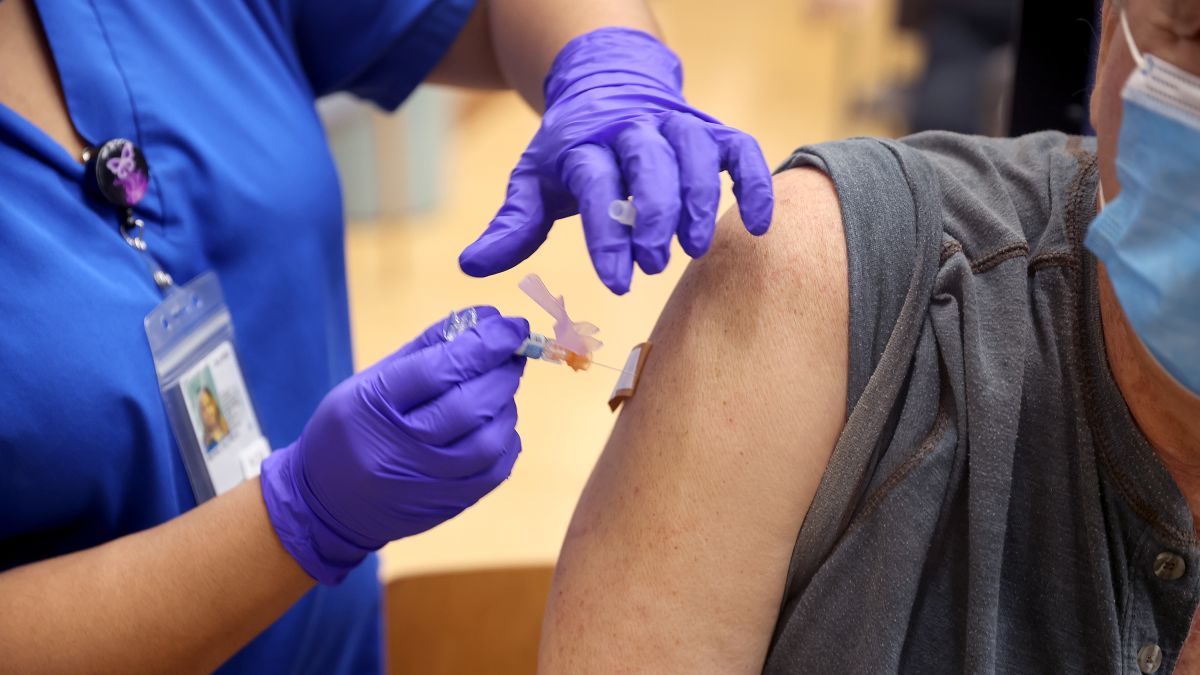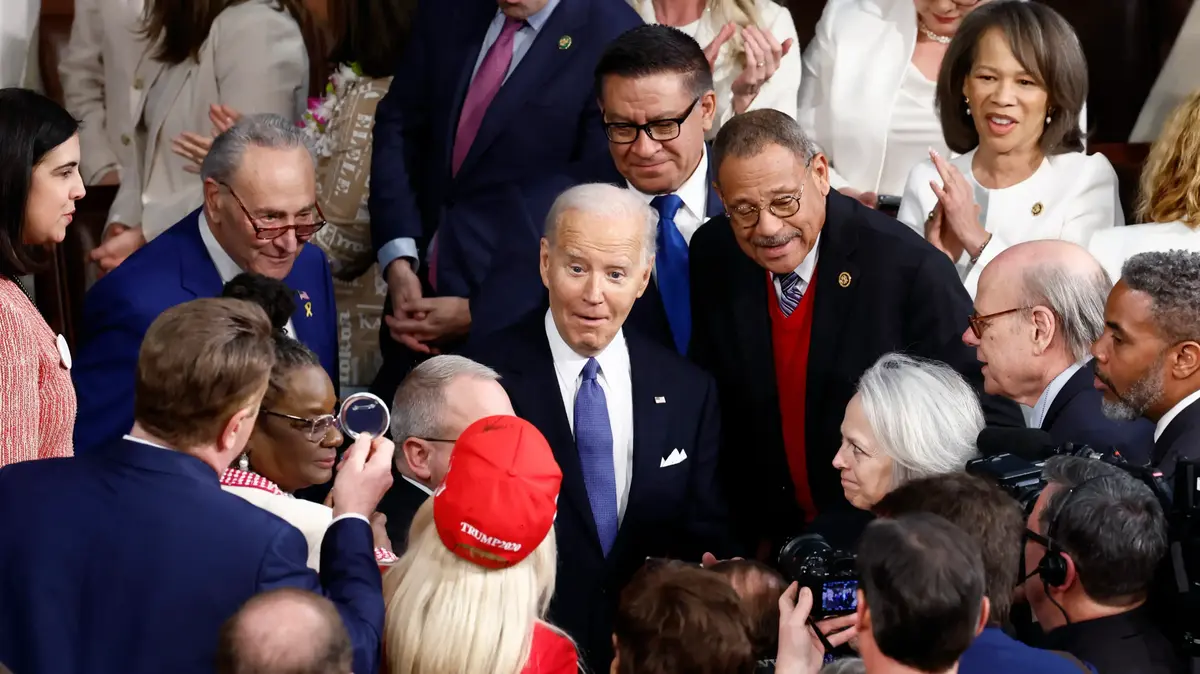Concern in Shanghai over new cases of covid-19 2:40
Washington (CNN) --
"You don't make the timeline, the virus makes the timeline."
That was Dr. Anthony Fauci's message to an anxious nation as the new coronavirus began to spread across the United States.
More than two years later, his words take on new relevance in the face of an ominous warning from the White House.
CNN's Kaitlan Collins reports:
The Biden administration has issued a new warning that the US could see 100 million Covid-19 infections this fall and winter, as officials publicly stress the need for more funding from Congress to prepare the nation.
The projection of 100 million potential infections is an estimate based on a series of external models that are being closely watched by the administration and would include both fall and winter, a senior administration official told CNN.
Officials say this estimate is based on an underlying assumption that no additional resources or mitigation measures are taken, including new COVID-19 funding from Congress, or dramatic new variances.
Coronavirus wave this fall and winter could infect 100 million, White House warns
Dr. Ashish Jha, the White House's covid-19 response coordinator, confirmed the warning during an interview on ABC News on Sunday, but stressed that "whether that happens or not is very much up to us as a country."
"We're looking at a number of models, both internal and external, and what they're predicting is that if we don't get ahead of this, we're going to have a lot of waning immunity, this virus continues to evolve, and we may see a pretty sizeable wave of infections, hospitalizations and deaths this fall and winter," Jha said.
Covid-19 cases are already on the rise.
Infections are up more than 50% from the previous week in at least eight states.
Parts of New York have moved into the "high" community-level designation for COVID-19, according to metrics from the US Centers for Disease Control and Prevention (CDC).
advertising
The new subvariants of the coronavirus: XD, XE and XF 2:21
But could the virus really infect 100 million Americans this fall and winter?
We asked Dr. Syra Madad, an epidemiologist at NYC Health + Hospitals, about the White House warning and what it might mean for you.
Our conversation, conducted over the phone and slightly edited to make it smoother and shorter, is below.
CNN
: What do you think of this warning from the White House?
MADAD:
I think that's a very important warning that everyone in America, whether they're unvaccinated or vaccinated and boosted, should heed because we've been to this rodeo before and we know what to do.
We have the tools and resources to protect ourselves and those around us.
It is important for people to be aware that the level of risk around them is increasing.
So there are things you can do to reduce your risk of getting infected and, of course, having a serious outcome.
When we talk about serious outcomes, we know that covid-19 vaccines work and resist very well the most serious outcomes, which are hospitalization, ICU care, and death.
At the same time, we want to make sure that there is also funding for pharmaceutical companies to be able to invest in bivalent and multivalent covid-19 vaccines.
CNN
: Officials say the White House estimate is based on an underlying assumption that no additional resources or additional mitigation measures are being taken.
Do you seem to agree that additional resources would make a big difference?
MADAD
: Of course.
I think the best thing about these predictions is that, after all, they are predictions.
There are models that project what is going to happen in the future, and we know that we have the resources and the tools to change that future.
We can avoid – I would say in general – that number, that number of people who get infected.
And I think there are a couple of questions and probably points of clarification that I will make on that 100 million figure.
It is not clear where they have gotten that approximate number of infections.
One can only predict that it's probably a combination of waning immunity, plus obviously Americans who haven't even been fully vaccinated.
We still have millions of Americans who have only received one dose.
We have millions of Americans who haven't even gotten a dose.
So it's a combination of all of those factors, along with being immunocompromised.
The important thing is that there is transparency in the origin of this figure.
I've just outlined some of the factors that are likely to go into this number, but it's important that we understand what factors come into play in this model.
Why don't some people get infected with the new coronavirus?
CNN
: Most of the US is fully vaccinated, and a lot of people are exhausted from the last two years.
How do you get people to heed warnings at this point in the pandemic?
MADAD
: That's a great question, and we know that pandemic fatigue is real and has already set in here in the United States.
We are certainly out of the acute phase of the pandemic, which means there are no red sirens, even though we know that obviously hundreds of Americans are still dying, sadly, every day, and thousands of Americans are still getting infected every day.
And we know that's certainly an understatement.
But because this virus and this disease are much more manageable because of the tools that we have, people are much more accommodating.
And I get it;
we will enter the third year.
People want to get back to enjoying the life they knew before this pandemic.
At the same time, I think it's important for people to realize that we're still in a pandemic.
As much as we don't want to be in one, that's the reality.
And it's not just determined by what happens here in the United States.
It is also determined by what is happening around the world.
And we're seeing more and more of these sub-variants appearing both here in the US, as well as around the world.
It's important for people to realize that this isn't over until it's over all over the world.
We have to continue to be cautious.
I think we can do all the things we like to do, but do it more safely, knowing that there are a lot more viruses in the community.
I think really understanding it from the point of view of, 'You shouldn't want to get infected.
You shouldn't want to get sick, even if it's manageable.'
For me, I think it is also the risk of a long covid.
I'm not necessarily afraid of getting infected with the virus, although I still avoid it.
I still wear masks at large indoor gatherings because I just don't want to get sick.
In fact, the long covid scares me.
I don't know what the long term repercussions will be like.
Restrictions apply to J&J vaccine in the US 2:10
CNN
: What are the best metrics for people to pay attention to?
MADAD
: I would look at sewage surveillance, which is an early indicator that tells you that there is something brewing in the community and that cases are increasing.
I would also continue to look at the CDC transmission level map.
That gives a good indication of where the transmission levels are in your community.
And we know that a lot of places in America are getting into that medium level of Covid-19 transmission, certainly here in New York City.
I would still like to know: Are hospitalization rates increasing in my community?
Will there be a hospital available for me in the event that I become infected and require hospitalization?
But that is more of a lagging indicator.
CNN: Anything else you want to add?
MADAD
: The White House is in a very difficult position.
They are struggling to get more funds.
They are making it very transparent that they are very concerned.
They want to make sure that people understand that this is not a joke.
That 100 million number is very large, so it's really important for Congress to understand that we're still in the pandemic, even though a lot of people have left the pandemic behind.
We could very, very quickly go back to the state we were in a few months ago with omicron, with a significant number of Americans infected.
We don't want to go back to that state, do we?
So we have to make sure that Congress understands that this is really important for funding to continue.
coronavirus









